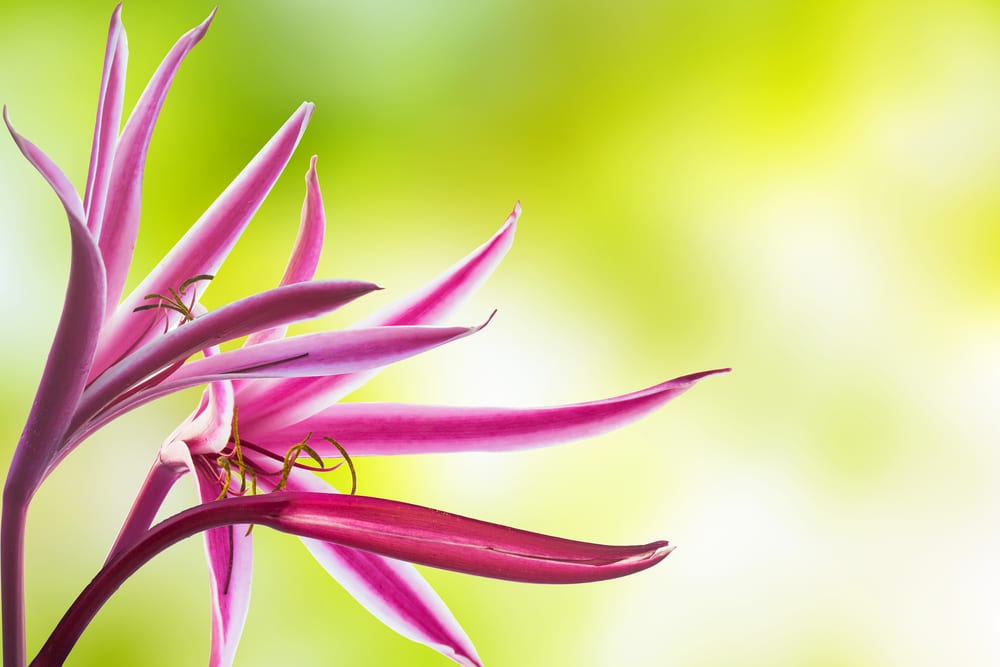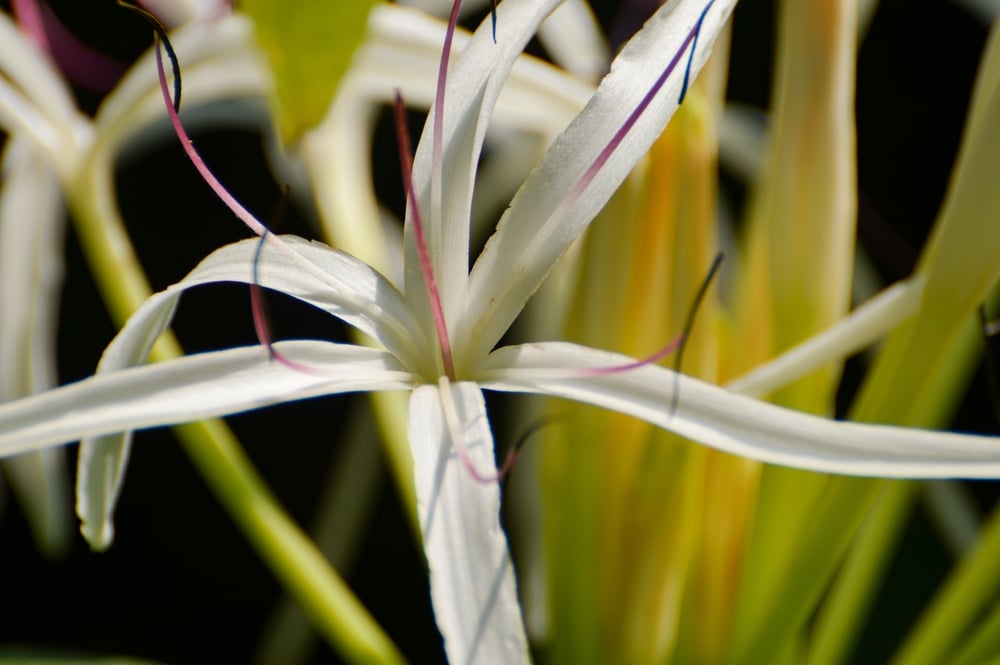Graceful and stately, Crinum Lilies are beautiful, easy-care bulbs that will give your garden a touch of old-fashioned charm. Remember those giant white lilies gracing the gardens of your childhood? Crinum Lilies are their modern-day cousins, with large and showy flowers paired with rich green foliage. Without a doubt, these plants can make a dramatic impact in any setting.
If you’re looking for a low-maintenance plant that will give your garden a big boost, you can’t go wrong with Crinum Lilies!
| Botanical Name | Crinum Asiaticum |
| Common Name | Crinum Lily |
| Plant Type | Perennial |
| Flower Color | Very fragrant and showy flowers, coming in a variety of colors, including white, pink, and red |
| Size When Mature | 12-36 Inches |
| Bloom Time | Summer |
| Sun Requirements | Partial Shade to Full Sun |
| USDA Hardiness Zones | 8 – 11 |
| Soil PH Range | 5.6 – 7.5 |
| Soil Type | Acidic, Neutral, Alkaline, Well-draining |
| Water Needs | Medium |
| Native Area | Asia and Australia |
What You Need to Know About Crinum Lily
Crinum lilies are native to tropical and subtropical regions of Asia and Australia. In their natural habitat, they typically grow in damp, marshy areas. These plants are well-suited to wet conditions and can even tolerate occasional flooding.
These plants are large bulbs that can reach 1-3 feet in height. They have large, coarse-textured, light-green leaves that are 4 feet long. Flowers produced by the Crinum lily are fragrant and showy, coming in various colors, including white, pink, and red. They bloom throughout the year, with peak blooming occurring in summer.
These plants are relatively easy to care for and are reasonably tolerant of neglect. However, they will perform best if given proper care. However, the entire plant is poisonous if ingested, so keep it out of reach of children and pets.
How to Care for Crinum Lily
Here’s everything you need to know about growing and caring for a thriving Crinum Lily:
Light
When choosing a location for your Crinum Lily, it is important to consider the amount of light the area receives. The plant grows best in partial shade.
However, it will tolerate full sun as long as it is given enough moisture. Ensuring your plant gets at least 2 hours of direct sunlight each day will help promote strong growth and abundant flowering.
Water and Soil Needs
The Crinum Lily is a moisture-loving plant. It prefers soil that is consistently moist but not soggy. The plant will tolerate occasional flooding and can even grow in standing water. However, it is important to ensure the plant is not left in water for extended periods.
When watering, be sure to soak the ground thoroughly. Watering the plant 1-2 times a week should be sufficient.
In terms of soil, the Crinum Lily is not particular and will grow in various soil types, including sandy, loamy, and clay soils. When it comes to soil acidity, the plant is relatively tolerant, preferring soil with a pH range of 5.6-7.5.
Temperature Requirements
Crinum Lily needs a warm environment to grow and thrive. The perfect temperature range for this plant is 60-65 degrees Fahrenheit, and it thrives in USDA zones 8-11. If the temperature dips below 20 degrees Fahrenheit, the leaves will start to yellow, and the plant will go into dormancy.
Fertilizer
The best fertilizer to use on a Crinum Lily is a slow-release, balanced, granular fertilizer. This type of fertilizer will provide the plant with a steady supply of nutrients throughout the growing season.
Apply fertilizer to the soil during early spring, early summer, and early fall. Doing this will give the plant the nutrients it needs to grow strong and produce beautiful flowers.
Common Diseases
The biggest threat to the Crinum Lily is powdery mildew. This disease is caused by a fungus that attacks the leaves of the plant, causing them to become covered in a white, powdery substance. If left untreated, powdery mildew can cause the leaves to be yellow and eventually drop off.
To prevent powdery mildew from infecting your Crinum Lily, make sure the plant has plenty of air circulation. Avoid overhead watering and water the plant at the base to keep the leaves dry. If powdery mildew does appear, treat it with a fungicide.
Crinum Lily Propagation
You can propagate Crinum Lily by division or seed.
Propagating by division is the most common method of propagation and is best done in early spring. To divide the plant, carefully dig up the bulb. Once you have the bulb, it should look like it has several smaller bulbs attached to it. Gently pull the smaller bulbs away from the main bulb and pot them up in their own containers.
On the other hand, Seeds can be collected from the flowers of the Crinum Lily. Once the flower has bloomed and begun to fade, gently remove the seedhead from the plant. Once the seedhead is removed, place it in a paper bag and allow it to dry for 1-2 weeks.
After the seedhead is dry, shake it to release the seeds. Doing so will give you a higher germination rate. With a moistened potting mix, add the seeds and ensure that they’re in a warm location. Expect the seeds to germinate within 2-4 weeks.
Related Article: Can Lilies Survive Frost


